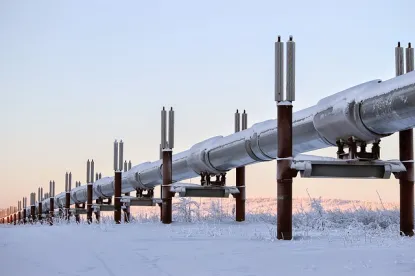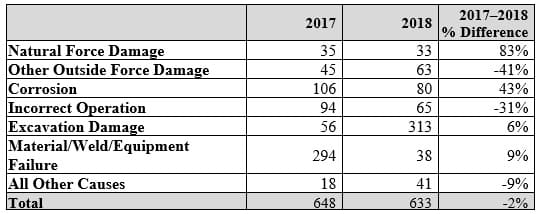In 2017 and 2018, we provided summaries of the Pipeline and Hazardous Materials Safety Administration (PHMSA) enforcement trends and made predictions based on mid-year enforcement numbers. In our July 2018 alert, we projected PHMSA would file fewer enforcement actions in 2018 than in 2017. This projection held true, with total enforcement actions dropping 13 percent from 2017 to 2018.
In 2018, PHMSA reduced its use of the two least severe enforcement mechanisms – Notices of Amendment and Warning Letters – but increased its enforcement of higher risk violations. PHMSA issues Notices of Amendment for violations of operators’ plans and procedures and issues Warning Letters for the lowest risk violations. From 2016 to 2017, PHMSA had increased use of these notices by 77 percent and 89 percent, respectively. PHMSA reversed that trend in 2018, with utilization dropping by 16 percent and 34 percent respectively.
PHMSA used enforcement mechanisms for higher risk violations in 2018 at a growing rate. PHMSA’s use of Notices of Probable Violation, which are issued for violations warranting civil penalties or compliance orders, increased by 21 percent. Notices of Proposed Safety Order, which are used for violations involving pipeline integrity risks to public safety, property, or the environment increased from two in 2017, to five in 2018.
The following charts are a compilation of data from PHMSA reports.
Comparison of Total Enforcement Actions 2017–2018
While 2017 enforcement actions seemed designed to prevent lesser violations from developing into larger problems, in 2018 PHMSA seemed to focus on enforcement actions that required operators to pay a penalty and/or correct a violation. Overall utilization of the more severe enforcement actions (Corrective Action Orders, Notices of Proposed Safety Order, and Notices of Probable Violation) increased from 28 percent in 2017 to 40 percent in 2018. In fact, PHMSA issued more Notices of Proposed Safety Order in 2018 than in any year since 2011 (five in 2018 and six in 2011). PHMSA issued more Notices of Probable Violation than Warning Letters in 2018, which had only occurred twice in the prior twelve years (in 2011 and 2016). Meanwhile, overall utilization of the less severe enforcement actions (Notices of Amendment and Warning Letters) decreased from 72 percent in 2017 to 60 percent in 2018.
Interestingly, while total enforcement actions decreased by 13 percent from 2017 to 2018, incident reports decreased by only 2 percent. Incident reports must be submitted to PHMSA for certain events at pipeline facilities. Reportable incidents include release of five gallons or more of hazardous liquid or carbon dioxide (with exceptions for maintenance activities); explosion at hazardous liquid or carbon dioxide pipeline; loss of 3 million cubic feet or more of natural gas, liquefied natural gas (LNG), liquefied petroleum gas, or refrigerant gas; personal injury necessitating hospitalization; death; property damage exceeding $50,000; and emergency shutdown of an LNG facility or an underground natural gas storage facility.
An incident report may or may not result in an enforcement action. And enforcement actions can arise from situations other than incident reports, such as inspections, complaints, or self-reporting.
PHMSA received 633 pipeline incident reports in 2018, down from 648 in 2017. Incidents involving fatalities or injuries increased by 69 percent, from 58 in 2017 to 98 in 2018. Compared with enforcement actions, in 2018, PHMSA issued one enforcement action for every 3.2 incident reports. For 2017, that ratio was one enforcement action for every 2.8 incident reports.
Comparison of Total Incident Reports 2017–2018
2019 Enforcement Actions to Date
Total Enforcement Actions – First Quarter Actual and Total 2019 Projected
Enforcement Action Breakdown by Numbers 2016–2019
Enforcement Action Breakdown by Percentage 2016–2019
Summary
PHMSA continues to focus on risk during the integrated inspection process. In June 2018, PHMSA administrator Howard “Skip” Elliott told Congress that PHMSA inspectors pursue “a risk-based, data-driven approach where each inspection is specifically designed to look at the risk profile of individual pipeline operators and focus on the greatest risks to safety.”
So far in 2019, PHMSA has not issued any of the more severe enforcement actions, suggesting a possible return to the trends observed in 2016 and 2017. Time will tell whether PHMSA continues to pursue higher severity enforcement actions as it did in 2018, or if PHMSA resumes its emphasis on less severe actions.








 />i
/>i





